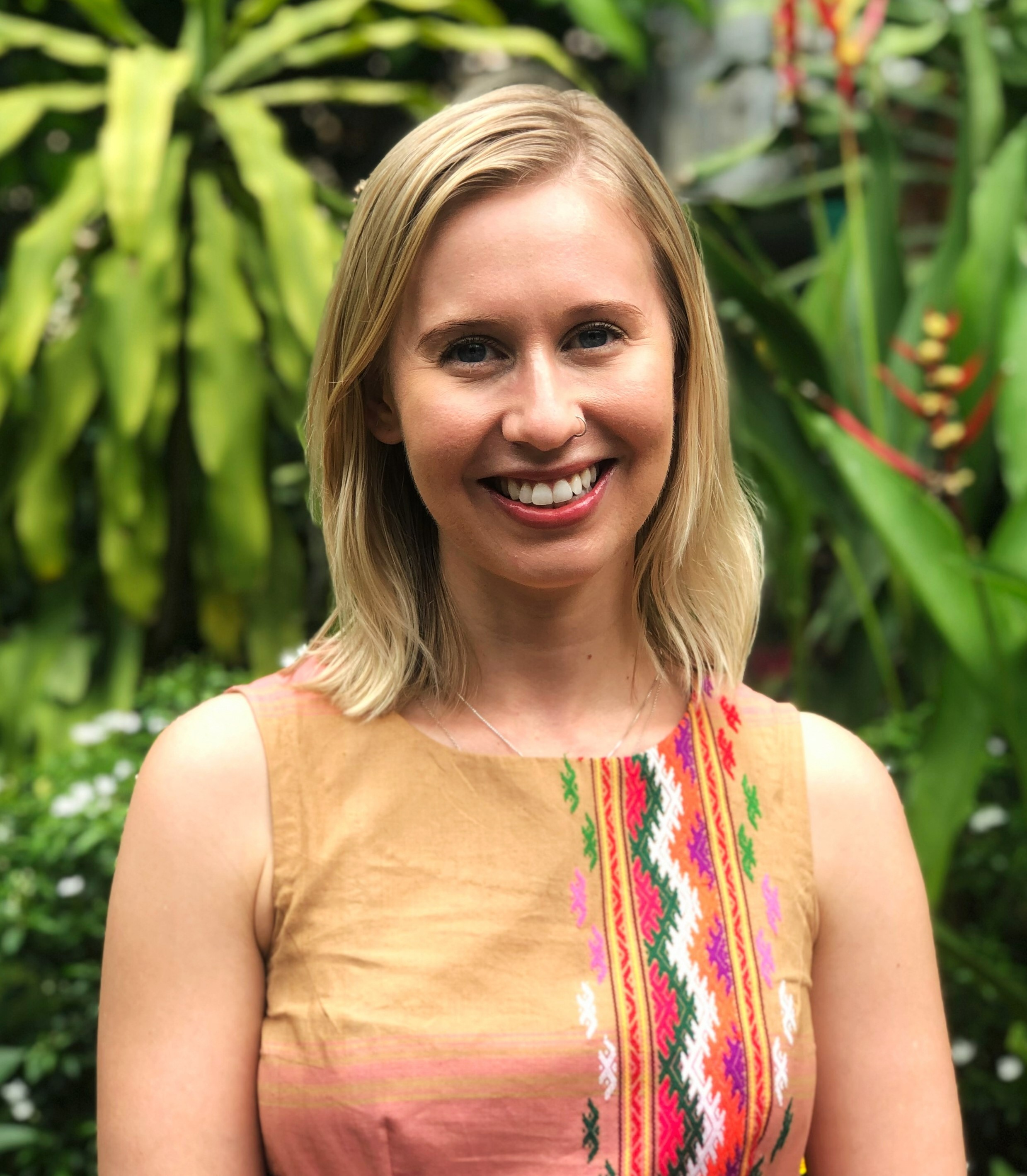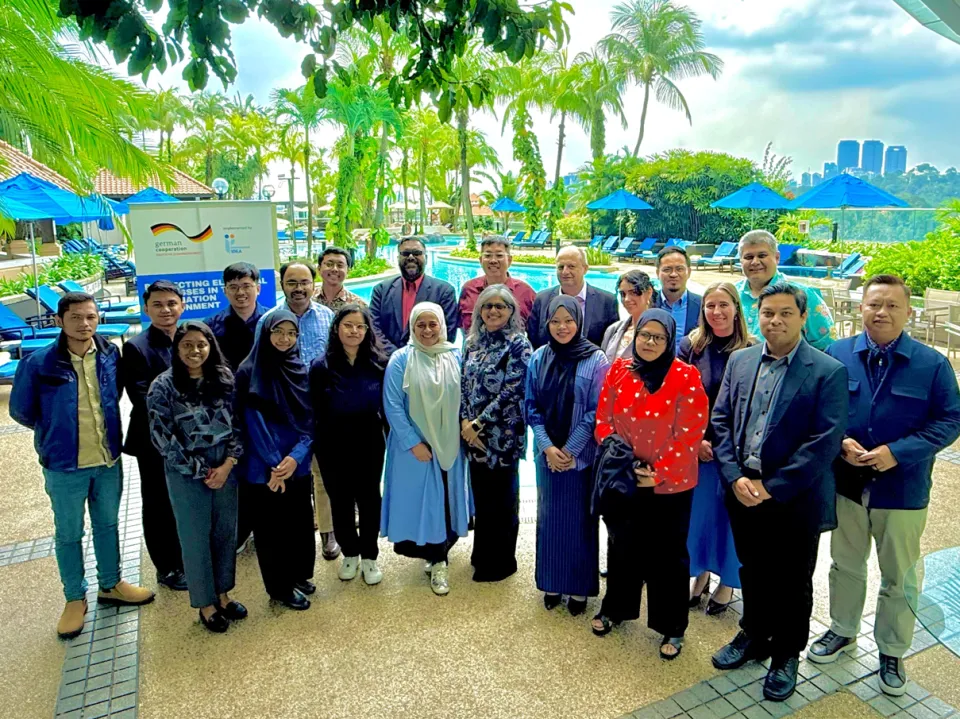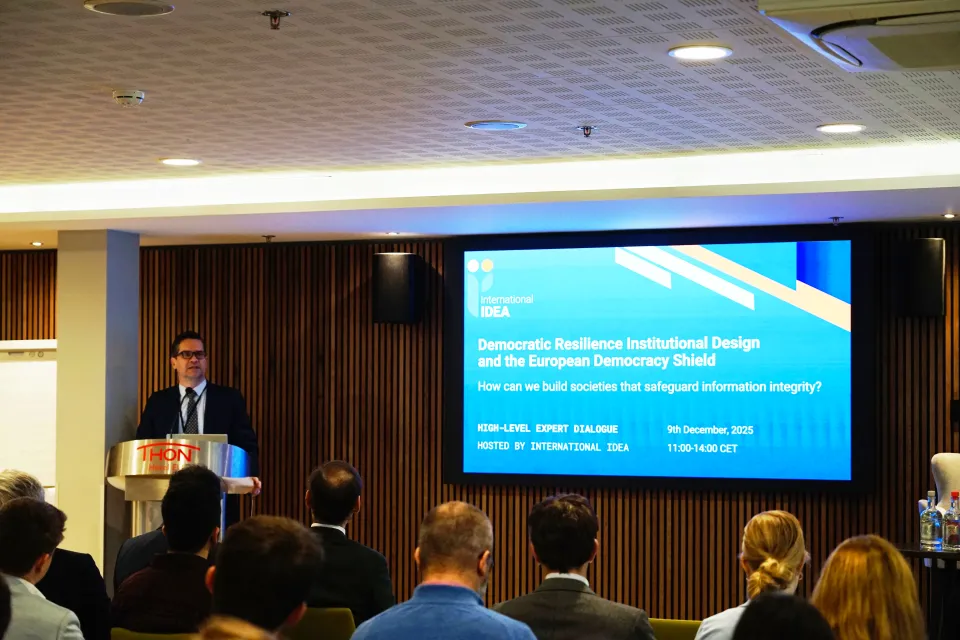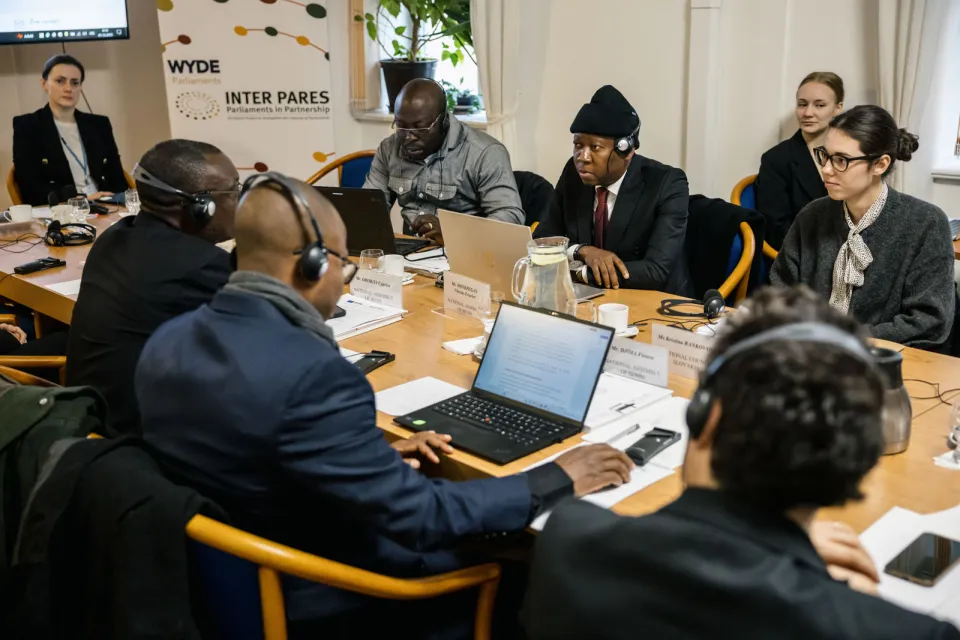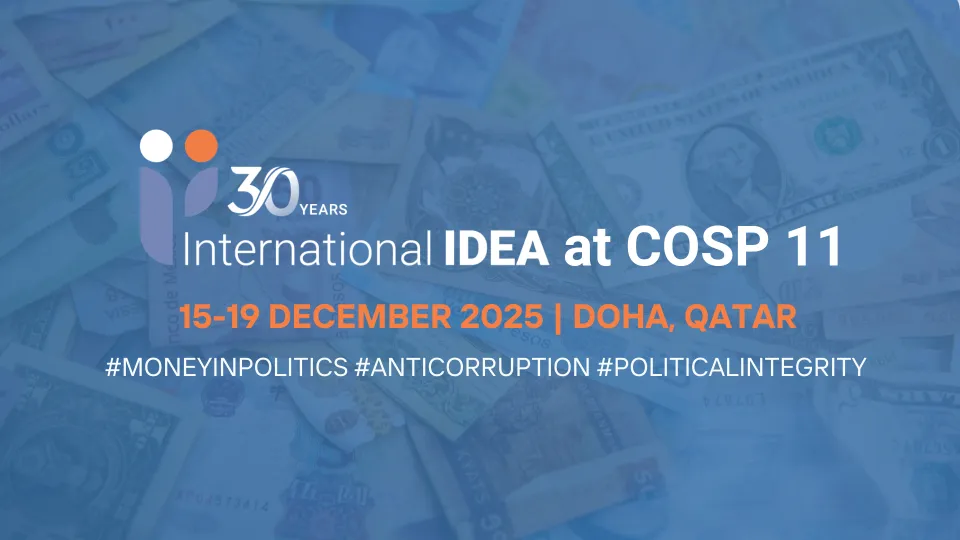“Whenever we have a chance, we take it” – An interview with photographer Mayco Naing
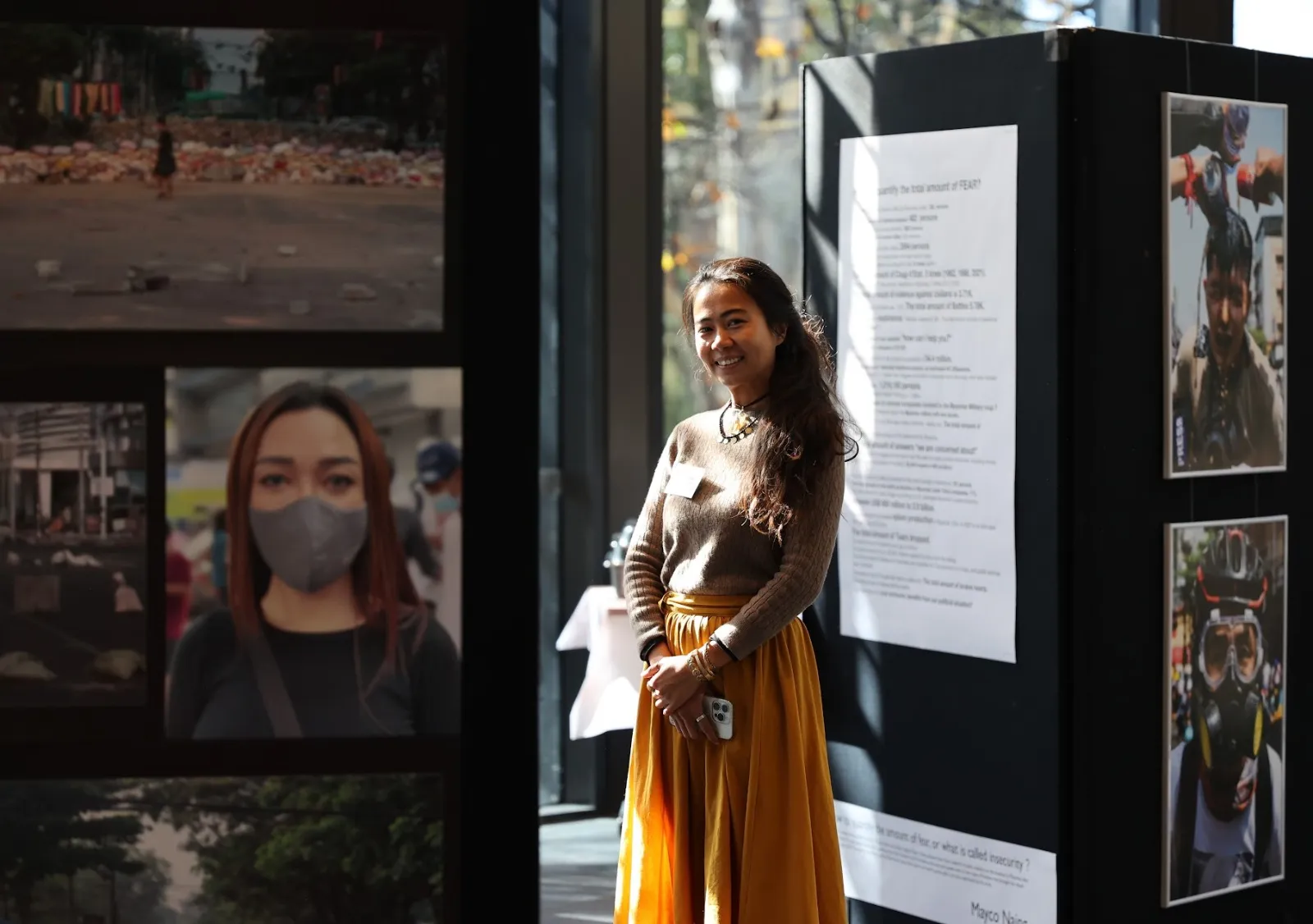
International IDEA spoke to artist and photographer Mayco Naing on the sidelines of the Australian National University (ANU) Myanmar Update 2023, where she launched her exhibition, “How to quantify FEAR”.
This interview has been edited for length.
Billie Phillips: Mayco Naing, it's a pleasure to have you here at the ANU exhibiting your and your colleagues' stunning work. What inspired you to become a photographer?
Mayco Naing: I was born in Myanmar in 1984 and lived in the countryside until I was 16. Then, I worked in a photo studio for two years while I waited to attend university. I did not know why I had to wait, but it was because the military had closed the universities due to the protests. I began as a photographer during the time of military censorship. I ended up graduating with a degree in statistics. I was still looking for a photography school in my country. There was none. We understood, when the country began to open in 2010, that the country had been so closed. Everything started to open, and journalism arrived. We had so many different opportunities to go outside of the country to study. [When I came back], it was the time of democracy. I started to understand photography as fine art. I then had the chance to study in France in 2013 because I won a prize at the Yangon Photo Festival, and after one year, I came back and worked for the Yangon Photo Festival until last year, before the coup d’état.
BP: Your exhibition here is called "How to quantify FEAR." Can you explain the meaning behind the title and talk about your process of creating these images while embedding them with the resistance movement in the early days following the coup?
MN: As a conceptual photographer and artist, my main interests since beginning my career are fear and identities. For example, the Rohingya [crisis], the conflicts… the reason for the conflicts are identities. It is my main subject, and I based my project on identities and fear — I am always asking, "What is it about fear for Burmese people?" In this exhibition I am talking about the fear of this military dictatorship; why do they manipulate the people?
In this exhibition I am talking about the fear of this military dictatorship; why do they manipulate the people?
Why the coup d’état happened, and all the news since then, I have one answer — this is fear. The first of the series [in the exhibition] is about the protestors whom the military started teargassing at the frontlines. Some pictures are of the youth protestors before the People's Defence Forces (PDF) were formed. The second is a series by the photographer Mauk Kham Wah from his half a year of experience living in the jungle with the PDFs. It visualises soldiers at war. The third is a documentary by the anonymous filmmaker M – he created a film documentary from the first to the 177th day of the coup when he left the country.
BP: This is not the country's first experience with a military coup d’état, but perhaps it is the first to occur when the country is so deeply internet connected. How have photographers and journalists used this tool to win support internationally, compared to times like in 1988, when the media had to smuggle prints out of the country?
MN: Because Myanmar is a special country, it has a hunger for education. As a trainer with Yangon Photo Festival (YPF) for ten years, from 2010 to 2020, we have been training journalists and photographers all over the country. Photographers from Getty and all over the world came to help train the community of journalists and photojournalists. In terms of their results, their feedback was that Burmese journalists were never ever below the quality of other journalists. This was very interesting to me; whenever we have a chance, we take it. When this coup happened, we already had CJs [citizen journalists] — which meant everyone could be a photographer, my grandmother could be a photographer, my uncle could be a photographer, and a trishaw driver could be a photographer. Now, CJs are now seeing their photos used by mainstream media.
At the same time, we have already experienced 1988 so some things we are used to, such as immediately fleeing the country. The main job, though, for media is to go through the country. I think one of the main qualities they have is to answer and connect immediately through their experience and network, and the other one is their bravery and talent, I think.
BP: Going back to the name of the exhibition. You talked about fear, but I'm interested in the distinction of quantifying fear. It seems to call on audiences to consider the sheer scale of the devastation brought by the coup in terms of numbers.
MN: I began to study, documenting the numbers after the coup when editing for journalists. I needed to know the information for every kind of update, so this is why I chose that part of the exhibition name. How can data be used in the reporting of information, at the same time asking this question as an artist? One of the art pieces I have [in the exhibition] is a text piece that asks: What are the total amount tears shed? The total amount of people with their heart broken? In the middle of the page, also, what is the total amount of people who asked, "How can I help you? To the amount of UN action and that kind of quantifying finding. What we can quantify the fear. That's the message we are trying to put out: the number of people killed, the number of villages burned down, the number of economic actors involved with the military dictatorship, opium production since the coup. At the same time, what's the unquantifiable? For example, how many dalan (police informer) do we have? We cannot count. So that's a question. That kind of question is poetic. A lot of information, statistics.
BP: A lot of the photos are close-ups, portraits of media workers and young people on the frontlines of the movement. What do you hope international audiences will take away from the work?
MN: Of course, in the media, we have a different type of photography we can publish. Not only the people in the portraits but also to show the teargas used. In Mauk Kham Wah's work – the photographer with the PDF — we want to show that the PDF are civilian people, including dancers, journalists, doctors, hairdressers, and DJs — these people are civilians on the front line. I wanted to show the power of the youth who became PDF soldiers as an act of resistance. I wanted to give them media attention.
I wanted to show the power of the youth who became PDF soldiers as an act of resistance. I wanted to give them media attention.
BP: Moving to the revolution itself, what more is needed? What kind of support do you feel is missing?
MN: We need a lot. I use my art and my photography opportunities to talk about this. That is why I wanted to exhibit name, to get attention and justice. First, we need more people to have more resistance. At the same time, resistance people need support from outside the country. Since the coup happened, we have been asking, "Help us." Then recently, the Ukraine invasion occurred, and those people have also been raising their voices for attention and help. We did the same. We don't have a lower voice than them [Ukrainians]. Everyone has been shouting and screaming, asking the same question.
We want help from the European Union, from Southeast Asia, everyone who can help. Even for education, we are asking them to create scholarships and visas for people who want to leave the country.
For the people remaining inside the country, so many villages have been burned down. We need emergency help for food. So whether inside or outside the country, we need help. We all want to bring down the dictatorship immediately — even tomorrow is too late. We have a resistance; we have an army. We need support from the countries that are able to help.
BP: In her opening remarks at the ANU Myanmar Update, NUG Foreign Minister Daw Zin Mar Aung spoke about people "using their bodies when they cannot use their voices." How did you interpret that based on your experiences photographing protestors?
MN: To use their bodies is to use their lives. I think we were trapped; we could not use guns at the time, so people used whatever they had. So they use their own personal security. They are using their lives, using their voices, and being real about their sacrifice. In the resistance, so many people have died, including photographers. Many heroes have fallen. We have been using resistance to win democracy. We are using our lives to win.
BP: Do you think the military junta underestimated the strength and spirit of the Myanmar people?
MN: I think both the military and the people forgot. We had ten years of freedom. We had the right to talk, the right to enjoy, and the right to work hard. We had open minds, and we could speak a lot, even criticise the democratic government, the NLD. A lot of people came back to rebuild their lives in Myanmar. We thought they [the military] would never come again. So immediately, the anger came because of the slide backwards to fifty years ago. The military was surprised [by the resistance], but we were also surprised. We were always thinking, "They can never come back." But they never expected we would develop such a strong sense of freedom in those ten years.
BP: Prior to the coup, you did incredible work with Yangon Photo Festival, training people all over the country in the art of photography. What kind of feedback did you receive when they were able to tell their own visual stories?
MN: In my ten years of experience with YPF, incredibly I discovered 100s of new photographers. Even though they weren't professionals, they learned. In ten years, we have thousands of students. The YPF and the training were about trying to communicate the stories behind the camera, which is a tool for the photographer. For many of them, they even found jobs. But if not, the confidence to tell their stories and continue.
BP: Many of the portraits in this exhibition focus on women — journalists, civilian protestors, young and old — do you think this movement has changed perceptions about women's roles in Myanmar society?
MN: We can say yes, change. But more so, highlight. It showed that women's voices, in response to the coup, were not lower than men. Male activists and women activists, all their voices have been raised for the revolution. In their different communities, for example, I am working as a photographer, even showing other people's work. As a woman, this is my voice.
It showed that women's voices, in response to the coup, were not lower than men.
BP: You spent the first 50 days of the coup on the frontlines taking these images. How did you feel at that time and when you left?
MN: From February to April, I think for 100 days, every morning, I locked my studio to go to the protest, and I thought, "Maybe this is the last time I come back." The first 50 days were quite peaceful, but then they started to shoot. We had to run, and sometimes I could not even go back home for three or four days, so the emotions started to come out. My Mum wanted to hide me somewhere, and I wanted to hide her somewhere. At that time, some of our friends were disappearing from their homes and were arrested. Some did not come back and were hiding. Before leaving the country, I had been hiding in seven places. So the emotion was, we had to be smart, we had to be fast, we have to look where to run away to and avoid them [security forces].
I think for 100 days, every morning, I locked my studio to go to the protest, and I thought, "Maybe this is the last time I come back."
BP: In many protests movements around the world, we see a relationship between the protestors and artists. How is that playing out in Myanmar?
MN: Yes, this is one of the major conversations about the military coup. We have a lot of creative artists, there is a huge community, a new generation of revolutionary artists. The posters, graphic art, and graffiti were all used in the middle of the protests, also the chanting of protest songs and raps against dictatorship. This music was created in the wake of the coup, and a lot of artists, including poets, are on the frontlines. They are one of the main targets of the military, to kill and arrest the poetry communities. Three major poets have been killed.
BP: What would you say to young photographers in the midst of the movement?
MN: There's a lot of photographers who want to talk about the inside stories, there's a lot of enthusiasm and motivation, and we have a lot of resources to discover their stories. Until now, they are risking their lives and security to tell their stories. So that's what we wanted from this exhibition: to tell the stories of war photographers inside the country and the up-to-date experiences of Myanmar people right now.
